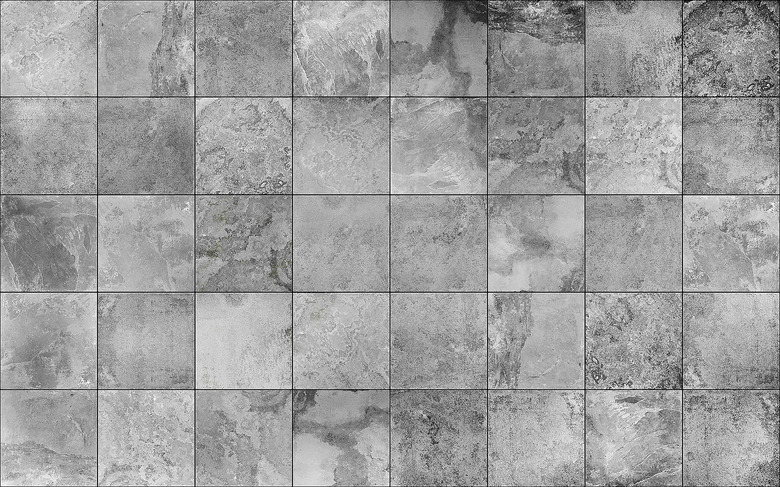How To Lay Out Staggered Ceramic Tile
Just like wood tile patterns, ceramic tiles come in a bevy of sizes, shapes and colors to make a unique counter, floor or backsplash. Staggering tiles seems like a simple thing to do, but there are quite a few ways to design a staggered tile pattern to bring out the best in the color, shape and thickness of your tile. Further, before laying down that first tile, you'll need to understand a few things, from getting the correct grout to measuring the rows and marking the measured tiles.
Ceramic Tile Patterns
A staggered tile pattern seems straightforward. Simply offset the tiles by an inch or two, and it's done. However, there are many ways to stagger tile that can open up a small space, add design that draws the eye or add texture and depth to make the space more inviting. To add depth to a room when tiling a floor, stagger the pattern on the diagonal. This opens up the room and adds an interesting design to an otherwise bland surface. A running bond tile layout is a classic ceramic tile pattern. This offset pattern looks particularly good with rectangular tiles to add depth to an otherwise plain tile selection or wall area.
Staggering Tile
After you have measured the space and bought the correct number of tiles, lay down a few on the surface to know how many rows of tile you will need. Half of those rows will be offset, or staggered, rows, and therefore will need some tiles cut. Determine how to proceed if you have an odd number of rows, i.e., whether you will stagger the tiles in that row or not.
Next, determine how much you want to stagger your tiles. Grab a tape measure and measure the tile. If the tile is 12 inches, create a gently staggered pattern by measuring in one inch, and marking it there with a wax pencil. For a more pronounced pattern, measure 6 inches from the edge or the middle of that 12-inch tile, instead.
Once you have measured and marked the tile, you can begin to lay down the first row of tiles. Lay the second row above the first row with the tile edge aligned with the wax pencil mark where you have measured for the pattern. Continue until the tiles are in place, including the smaller edge pieces that have been cut to fit.
Grout Line by Size
Thin or thick, square or round, no matter the shape of the tile you have chosen, the grout is the key to a smooth and seamless installation. If you have chosen tiles that are larger than 1/8-inch in thickness, you will want to pair it with sanded grout. For thinner tiles, un-sanded grout works well to keep the tiles spaced evenly and to protect them from cracking or crumbling around the edges.
Laying Tile Over Existing Flooring
Tile can be placed down over existing flooring. The flooring should be clean and free of cracks, bumps, broken tiles, ripped laminate squares or other imperfections that can affect the finished surface. Check the door jambs to be sure they are not too low for the thickness of the tile you are putting down. A thin-set mortar mix with an additive of latex or polymer will help the tile to adhere to the existing flooring.
